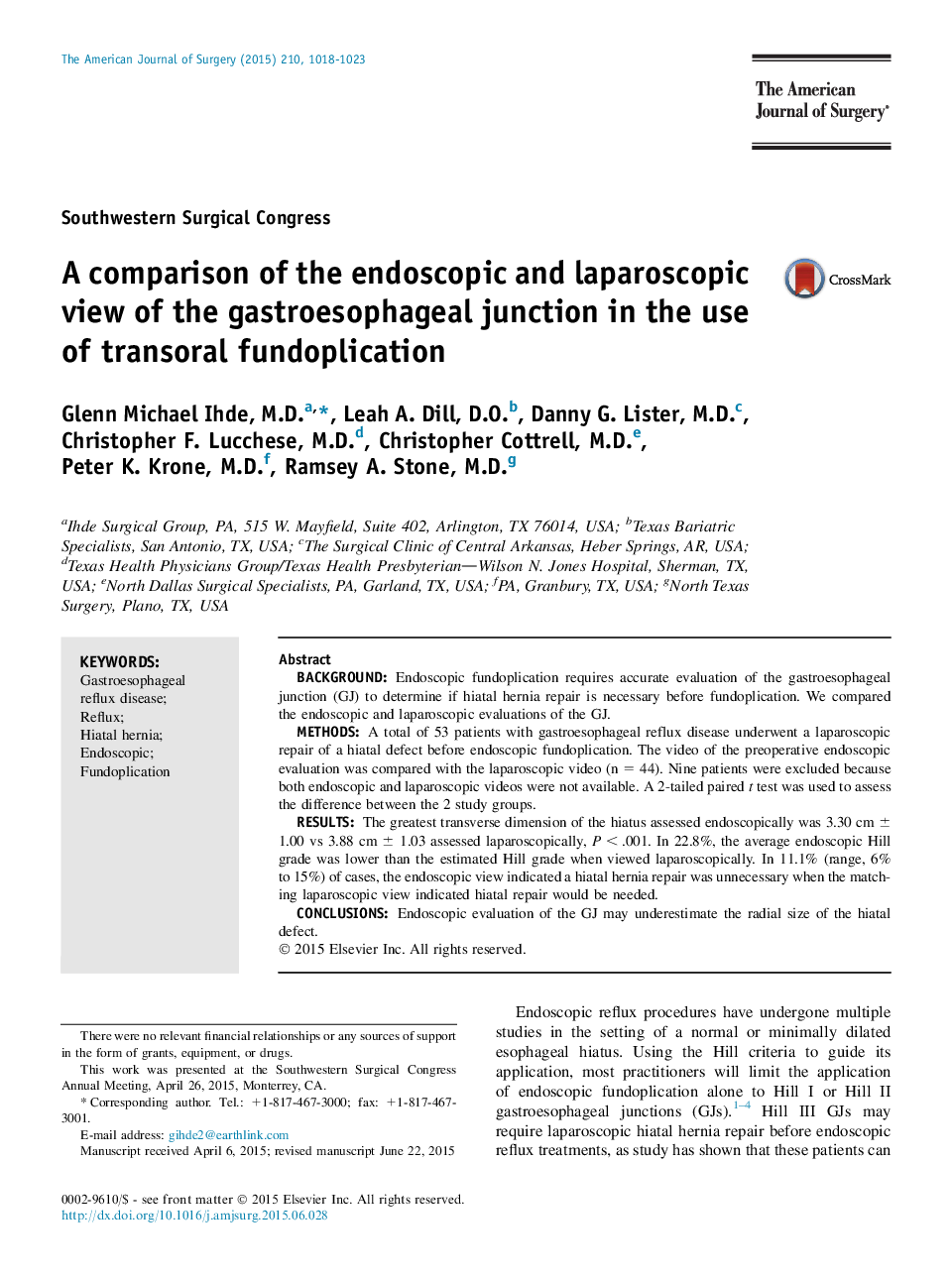| Article ID | Journal | Published Year | Pages | File Type |
|---|---|---|---|---|
| 6250629 | The American Journal of Surgery | 2015 | 6 Pages |
BackgroundEndoscopic fundoplication requires accurate evaluation of the gastroesophageal junction (GJ) to determine if hiatal hernia repair is necessary before fundoplication. We compared the endoscopic and laparoscopic evaluations of the GJ.MethodsA total of 53 patients with gastroesophageal reflux disease underwent a laparoscopic repair of a hiatal defect before endoscopic fundoplication. The video of the preoperative endoscopic evaluation was compared with the laparoscopic video (n = 44). Nine patients were excluded because both endoscopic and laparoscopic videos were not available. A 2-tailed paired t test was used to assess the difference between the 2 study groups.ResultsThe greatest transverse dimension of the hiatus assessed endoscopically was 3.30 cm ± 1.00 vs 3.88 cm ± 1.03 assessed laparoscopically, P < .001. In 22.8%, the average endoscopic Hill grade was lower than the estimated Hill grade when viewed laparoscopically. In 11.1% (range, 6% to 15%) of cases, the endoscopic view indicated a hiatal hernia repair was unnecessary when the matching laparoscopic view indicated hiatal repair would be needed.ConclusionsEndoscopic evaluation of the GJ may underestimate the radial size of the hiatal defect.
